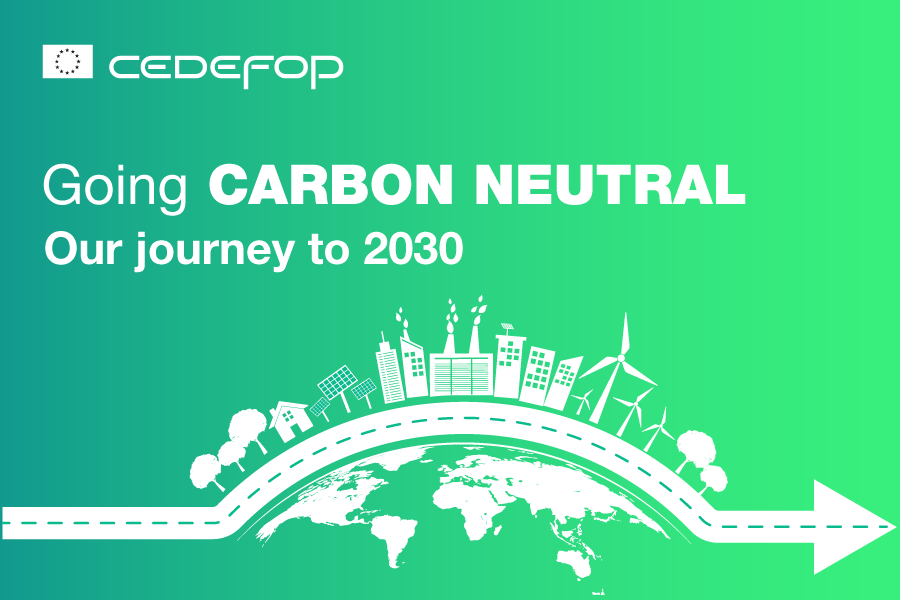Cedefop has recently made a firm strategic commitment to become carbon neutral by 2030. The Agency’s objective is to cut down greenhouse gas (GHG) emissions to the lowest possible amount and compensate any remaining unavoidable emissions through carbon removal activities.
The European Commission has made a similar pledge, aiming to be climate neutral by 2030. Other EU agencies are also working towards the same direction. The EU as a whole aspires to be climate neutral by 2050.
Reducing greenhouse gas emissions is the first step in Cedefop’s journey towards climate neutrality and sustainable corporate presence. This will be a process of transformation for the Agency under the umbrella of a broader environmental strategy; it will entail being mindful of reducing our impact on the climate and on the environment, as we continue our work to fulfil our mission.
To ensure accountability, Cedefop is planning to improve its environment management system, aiming to become EMAS certified.
This will require a series of actions in several areas, such as facility management, travelling and modes of working, to reduce both direct and indirect emissions. Some actions have already been implemented:
- business travel has been cut down by at least 65% compared to 2019;
- LED lighting replaced traditional lighting;
- new energy-efficient window blinds were installed;
- electric car chargers were made available to staff.
More have been decided on and will be implemented in 2023, such as upgrading the building insulation and installing photovoltaic panels.
The results of a dedicated study on ways to becoming carbon neutral by 2030 are expected to provide ideas for further actions and commitments to be made in areas such as:
- greener ICT and digital communication;
- green public procurement;
- optimisation of workspaces;
- lower travel carbon footprint;
- organisation of sustainable events.


